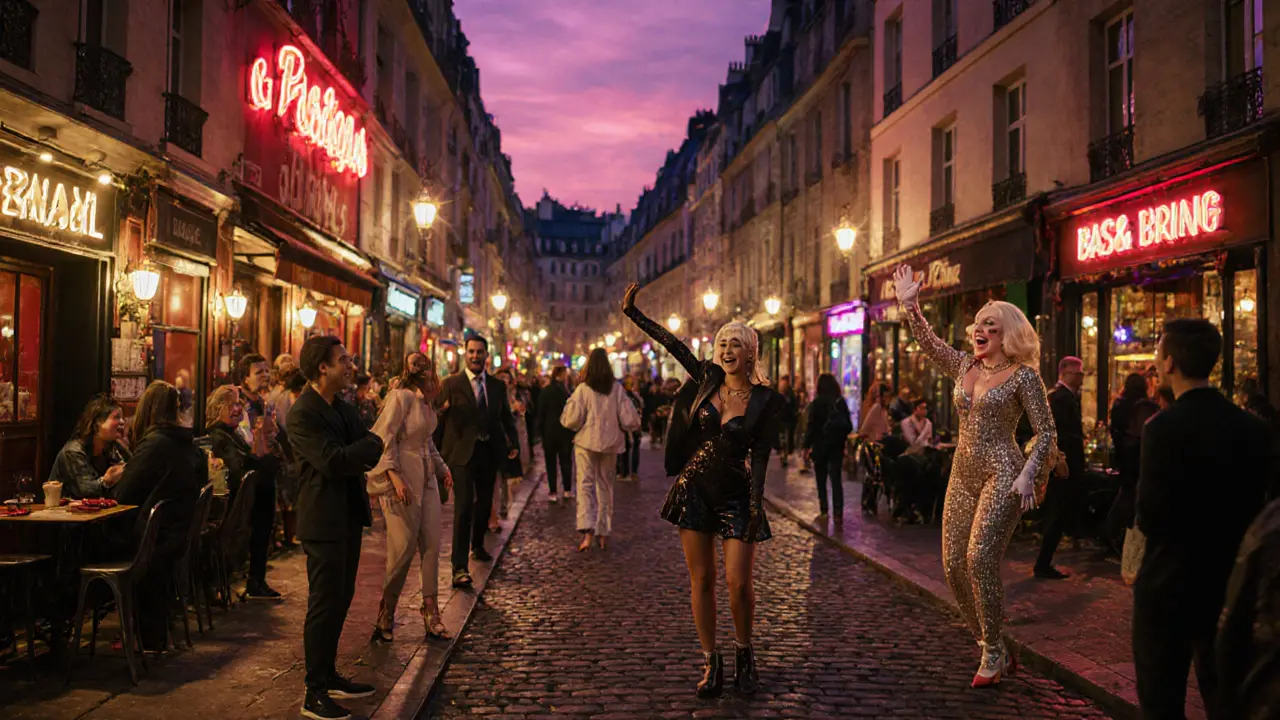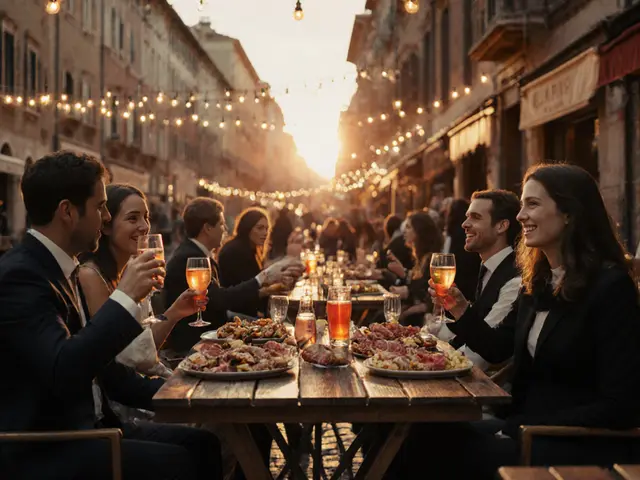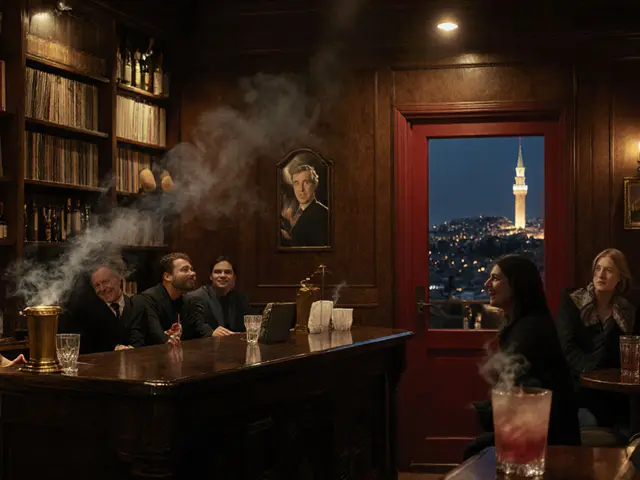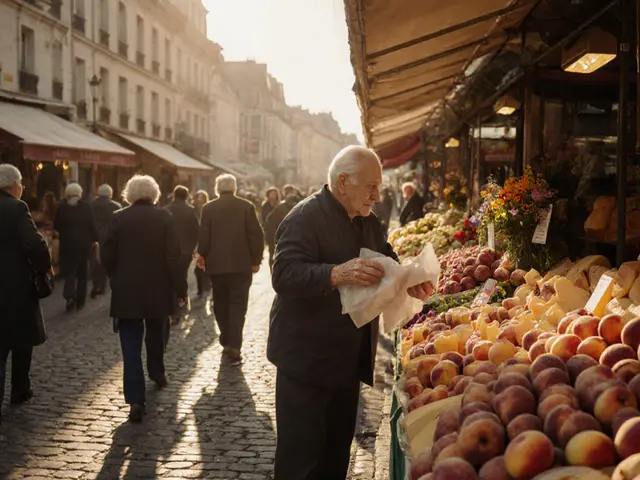Paris isn’t just about the Eiffel Tower and croissants. By night, the city transforms into one of Europe’s most vibrant and welcoming hubs for LGBT+ people. From underground drag shows in Montmartre to glittering dance floors in Oberkampf, the queer nightlife here doesn’t just exist-it thrives. And it’s not just for tourists. Locals, expats, and travelers all mix freely under neon lights, dancing to house, pop, and French disco without fear. If you’re planning a trip to Paris and want to experience the real pulse of its queer community, this guide cuts through the noise and shows you where to go, what to expect, and how to make the most of it.
Where the Scene Is Alive: Neighborhoods to Know
Paris doesn’t have one single gay district-it has several, each with its own flavor. The most famous is Le Marais. It’s the heart of the city’s LGBT+ life, packed with bars, cafes, bookstores, and boutiques. But don’t stop there. The real energy spills into nearby areas like Oberkampf and Belleville, where the crowds are younger, the music louder, and the vibe more raw.
Le Marais feels like a curated experience. You’ll find classic spots like Le Refuge is a long-running bar and cultural hub in the 3rd arrondissement that opened in 1984 and still draws crowds for its weekly drag nights and intimate live performances. It’s cozy, welcoming, and perfect for a drink before dinner. Just a few steps away, Le Baron is a stylish, members-style club with a mixed crowd and a reputation for celebrity sightings and themed parties. Don’t expect cheap drinks here-it’s a destination spot.
Head south to Oberkampf, and things get grittier in the best way. Le Depot is a no-frills, all-ages bar that turns into a dance party by 11 PM, with DJs spinning everything from French house to queer punk. It’s the kind of place where you’ll make friends before your first drink. Belleville, meanwhile, is where you’ll find Le Dernier Bar Avant La Fin Du Monde is a queer-friendly space that blends art installations, spoken word nights, and late-night cocktails with a strong activist edge. It’s not just a bar-it’s a community center with a dance floor.
Bars, Clubs, and Events You Can’t Miss
Paris has more than 50 queer-friendly venues, but only a handful truly stand out. Here’s the shortlist that locals swear by.
- Le Baron is a high-end club with a strict door policy and a crowd that leans fashion-forward. Best for: special occasions, weekend parties.
- La Poubelle is a dive bar with a legendary drag show every Friday. The stage is tiny, the lighting is bad, and the performances are unforgettable. It’s the soul of Paris queer nightlife.
- Le Palace is a historic venue that hosts monthly queer dance parties with international DJs. The crowd is diverse, the music is loud, and the energy is electric.
- Le Cercle is a lesbian-focused bar with karaoke nights, poetry readings, and a cozy terrace. It’s one of the few spaces in Paris where queer women dominate the floor.
- La Station is a warehouse-turned-club in the 19th arrondissement that hosts underground techno nights and queer rave events. No dress code. No judgment. Just music.
Don’t miss the monthly Paris Pride Afterparty is a massive, city-wide event that runs from dusk to dawn, with pop-up parties in every neighborhood. It’s free, open to all, and draws over 10,000 people. Even if you’re not in town during June, check the calendar-many venues host smaller pride-inspired events year-round.
What to Expect: Safety, Etiquette, and Local Norms
Paris is one of the safest cities in Europe for LGBT+ travelers. Same-sex marriage has been legal since 2013, and public displays of affection are generally accepted, especially in Le Marais and Oberkampf. That said, it’s not all sunshine. Outside the main queer zones, you might still get a sideways glance-especially in more conservative neighborhoods like the 16th arrondissement.
Don’t assume everyone speaks English. While staff at major clubs will, many regulars won’t. Learning a few French phrases goes a long way: “Bonjour,” “Merci,” “C’est combien?” A smile and a simple “Je suis tourist” (I’m a tourist) often opens doors.
Parisians value style, even in casual spaces. You don’t need to dress up for Le Poubelle, but showing up in sweatpants and flip-flops might earn you a look. Jeans, a nice shirt, and clean shoes are the unspoken uniform. At Le Baron or Le Palace, smart casual is the rule.
And remember-Paris isn’t a theme park. The queer scene here is deeply rooted in art, politics, and resistance. Many bars host film screenings, book readings, or activist talks. Show up, listen, and respect the space. You’ll be welcomed in return.
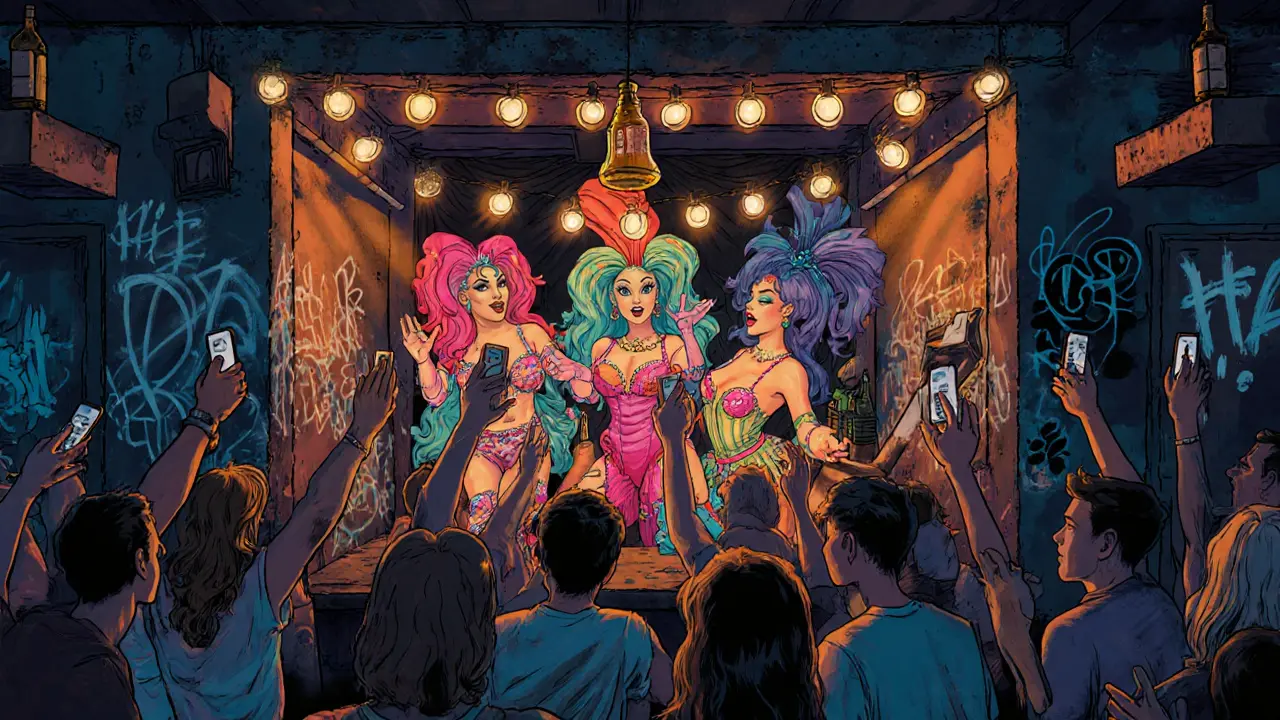
When to Go: Seasonal Tips and Best Times
Paris’s queer nightlife is active year-round, but the energy shifts with the seasons.
- June is Pride Month. Expect packed streets, parades, and nonstop parties. Book accommodations early-hotels sell out months ahead.
- July and August are quieter. Many locals leave the city, but the clubs stay open. It’s the perfect time to enjoy a quieter night out with more space to dance.
- September to November is the sweet spot. The weather cools, the crowds thin, and the parties get more creative. Many new events launch in September after the summer break.
- December brings holiday-themed parties. Think glitter, mulled wine, and drag Christmas shows. Le Refuge and Le Cercle host some of the best.
Most clubs don’t get busy until after 11 PM. Don’t show up at 9 PM expecting a dance floor. The real action starts around midnight and lasts until 3 or 4 AM. Some spots, like La Station, stay open until 6 AM.
Getting Around: Transport and Tips
Paris is easy to navigate at night. The metro runs until about 1:15 AM on weekdays and 2:15 AM on weekends. After that, you’ll need a taxi or rideshare. Uber and Bolt are reliable, and drivers are generally respectful.
Walking is safe in Le Marais and Oberkampf after dark, especially in groups. Avoid isolated streets in the 18th or 19th arrondissements late at night unless you know the area. Stick to well-lit main roads.
Download the Paris Gay Guide app-it’s free, updated weekly, and lists every queer event, bar, and club with real-time crowd updates. It’s the most accurate tool you’ll find.
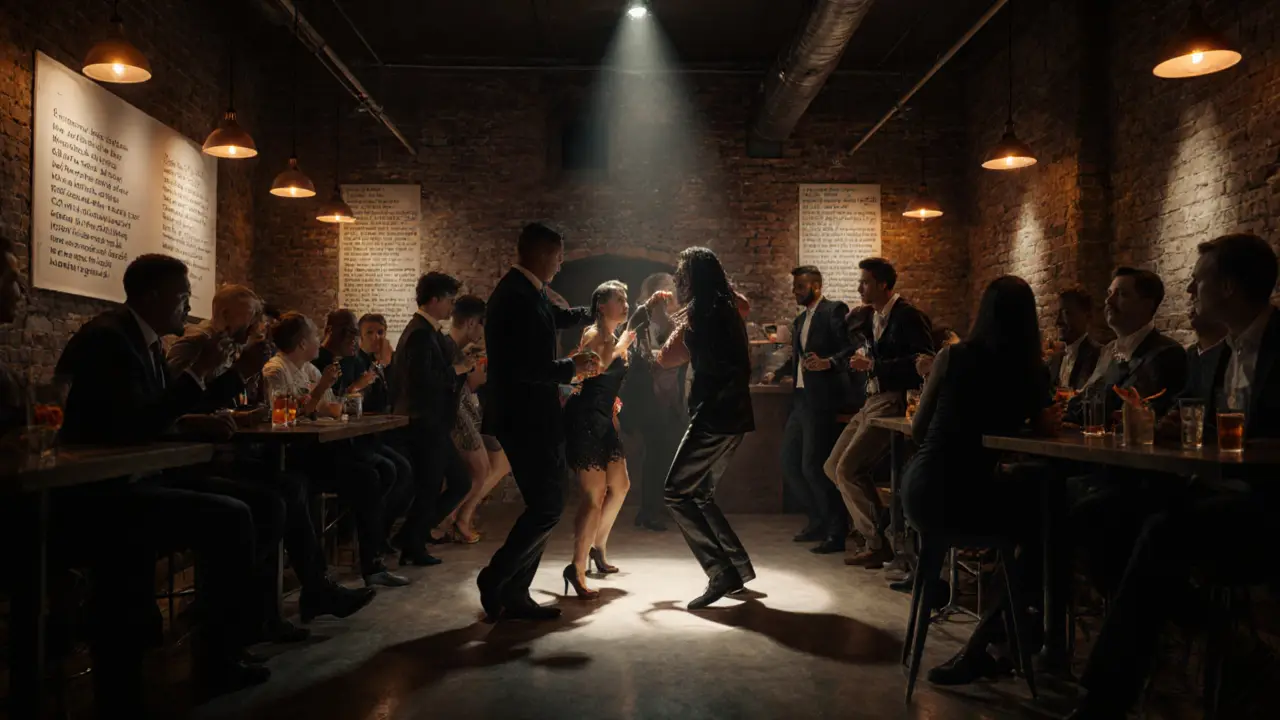
Who’s Really There? The Crowd You’ll Meet
Paris’s queer nightlife isn’t homogenous. You’ll find students from the Sorbonne, artists from Montmartre, professionals from La Défense, and travelers from every continent. The scene is diverse in age, race, gender, and background.
At Le Cercle, you’ll likely meet women in their 30s and 40s who’ve been part of the scene for decades. At Le Depot, it’s 20-somethings from Senegal, Brazil, and Poland, dancing like no one’s watching. Le Palace draws a mix of all ages-families of queer friends, older couples, and first-timers.
Don’t expect a single “type.” Paris doesn’t have a gay stereotype. It has people. Real, messy, brilliant, loud, quiet, creative people who just want to be themselves. That’s what makes it special.
Final Tips: How to Make the Most of Your Night
- Check event calendars on Paris Pride and Lesbian & Gay Paris websites-they list weekly happenings.
- Bring cash. Many smaller bars don’t take cards.
- Don’t rush. Parisian nights are long. Sip your drink. Talk to strangers. Let the night unfold.
- Respect boundaries. If someone says no, don’t push. French social norms are more reserved than in the U.S. or Australia.
- Leave your assumptions at the door. Paris isn’t a fantasy. It’s real life-with all its beauty and imperfection.
If you want to feel what it’s like to be truly free in a city, come to Paris after dark. You won’t just find a party. You’ll find a community that’s been fighting for its right to exist-and dancing anyway.
Is Paris safe for LGBT+ travelers at night?
Yes, Paris is one of the safest cities in Europe for LGBT+ travelers. Public displays of affection are widely accepted in neighborhoods like Le Marais, Oberkampf, and Belleville. While isolated areas outside these zones may draw unwanted attention, most nightlife districts are well-lit, patrolled, and welcoming. Always use trusted transport after midnight, and stick to busy streets.
Do I need to speak French to enjoy LGBT nightlife in Paris?
No, but it helps. Staff at major clubs and tourist-friendly bars speak English. However, many regulars and bartenders in local spots like Le Poubelle or Le Cercle don’t. Learning basic phrases like “Bonjour,” “Merci,” and “C’est combien?” makes a big difference. A smile and effort go further than perfect grammar.
Are there lesbian-specific venues in Paris?
Yes. Le Cercle in the 11th arrondissement is the most well-known lesbian bar, with weekly karaoke, poetry nights, and a strong community focus. La Belle Hortense in the 10th also hosts queer women’s events and film screenings. These spaces are intentionally low-key and welcoming, offering a rare space for queer women to connect without male-dominated energy.
What’s the dress code for Paris LGBT clubs?
It varies. Le Baron and Le Palace expect smart casual-no shorts, flip-flops, or athletic wear. Le Poubelle and Le Depot are much more relaxed. Jeans and a nice shirt are safe everywhere. The key is to look put-together, not flashy. Parisians value effort and style, even in casual settings.
Are there free LGBT events in Paris?
Absolutely. Many queer art shows, film nights, and community gatherings are free. Le Dernier Bar Avant La Fin Du Monde hosts free poetry and spoken word events. The Paris Pride Afterparty is free and open to all. Check local listings on Paris Gay Guide or the official Paris LGBTQ+ tourism site for weekly free events.
What’s the best time of year to visit for LGBT nightlife?
September to November is ideal. The summer crowds are gone, the weather is still mild, and new events launch after the August break. June is exciting for Pride, but it’s packed and expensive. December offers festive parties without the June chaos. Avoid July and August if you want a full scene-many locals are away.
